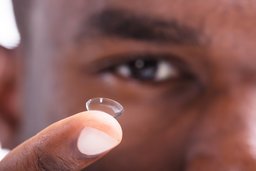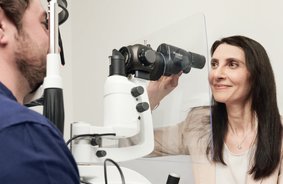What is short-sightedness?
Short-sightedness, or myopia, typically occurs when the eyeball grows too quickly in childhood. Myopia can rapidly worsen, particularly in younger children, because their eyes are growing at a faster rate. 6,8 The prevalence and severity of myopia is growing, it’s expected to affect more than 50% of the world’s population by 2050. 2


Myopia causes blurry vision
It usually requires glasses or contact lenses to see details, for instance on a whiteboard or the TV. 9 As myopia increases so does the reliance on vision correction for everyday activities and there is also an increased risk to future eye health. 3,4,5
Why is this happening?
There is a link to modern lifestyles, near-vision activities and increased screen time – but genetics also plays a part. 10-16

More
screen time
More screen time

Less
outside time
Less outside time

Educational demands

Urbanisation

Genetics
How myopia affects your child today
As myopia gets worse, it can impact quality of life. This is because children become increasingly dependent on vision correction to fully participate in school, sports, and other daily activities. 3,4
Myopia often worsens faster in younger children, so it is important to start treatment as soon as possible 6
How myopia could affect your child’s future
Myopia can lead to more serious eye health problems later in life. 5 Including:
myopic maculopathy 17
retinal detachment 18
glaucoma 19
cataracts 20
Options for your child if they are myopic
- If your child has been diagnosed with myopia, there are some clinically effective options that can slow the worsening of myopia. 25 Discuss the best option for your child with your eye care professional.
- Myopia management technology provides clear vision whilst aiming to slow the worsening of myopia over time. 21*

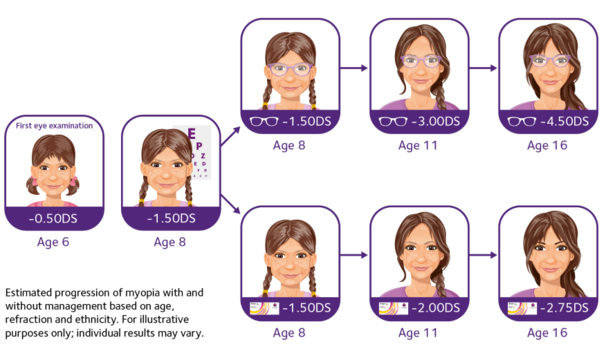

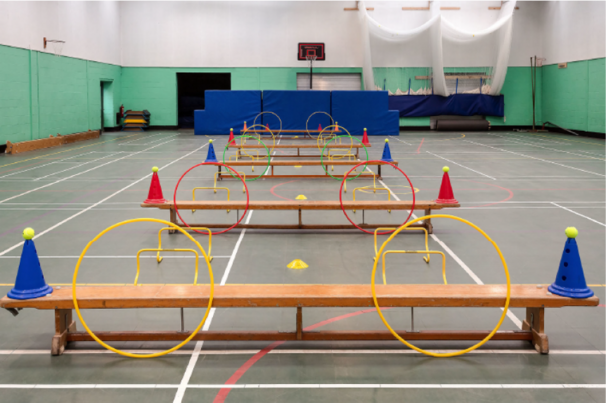
Myopia Management Options
Contact Lens Options
Dual-focus myopia management: MiSight®1 day contact lenses
The most clinically-tested myopia management optical technology. 7,26,27
One day soft contact lenses which are worn during the day
Ideal for active children
Clinically proven for children aged 8+1 7,26,27*
Feel more competent when taking part in sport and other physical activities 28
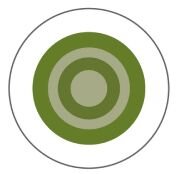
ActivControl® Technology in MiSight® 1 day contact lenses is a special optical design that can provide clear vision while also reducing the signal that’s telling the eye to grow too long. 7
Correction zones for clear vision
Treatment zones

Works for nearly all children with myopia 21*

Cuts the worsening of myopia by half 1+

Works at any age the child starts treatment 1+

Benefits are proven to last after treatment has ended 26,28*
Easy for children to apply, wear and remove 29
Spectacle Lens Options
Stellest spectacle lenses
The Essilor Stellest spectacle lens is designed with Highly Aspherical Lenslet Target ("H.A.L.T.") Technology. The HALT technology is made of a constellation of 1,021 invisible 33 lenslets. This constellation creates a signal in front of the retina that acts as a shield against eye elongation and, therefore, myopia progression.
Essilor® Stellest® lenses slow down myopia progression by 67% on average 32, compared to single vision lenses, when worn 12 hours a day.
Benefits of Stellest lenses

Correct myopia
Giving your child vision as sharp as with single vision lenses 31

Control myopia
Slow down myopia progression by 67% on average 32

No compromises
Aesthetic and safe
Find your nearest store and book an appointment.
References:
- Arumugam B et al. Modelling Age Effects of Myopia Progression for the MiSight 1 day Clinical Trial. Invest. Ophthalmol Vis Sci. 2021; 62(8): 2333.
- Holden BA, Fricke TR, Wilson DA, et al. Global prevalence of myopia and high myopia and temporal trends from 2000 through 2050. Ophthalmology. 2016;123(5):1036-1042.
- Lamoureux E L et al. Myopia and Quality of Life: The Singapore Malay Eye Study (SiMES). Invest. Ophthalmol Vis Sci. 2008; 49(13): 4469.
- Chua S Y L and Foster P J. The Economic and Societal Impact of Myopia and High Myopia. Ang M and Wong T. (eds) Updates on Myopia. Springer. 2020; 53-63.
- Tideman J W et al. Association of axial length with risk of uncorrectable visual impairment for Europeans with myopia. JAMA Ophthalmol. 2016; 134(12): 1355-1363.
- Zadnik K et al. Factors Associated with Rapid Myopia Progression in School– aged Children. Invest. Ophthalmol Vis Sci. 2004; 45(13): 2306.
- Chamberlain P et al. A 3-year Randomized Clinical Trial of MiSight Lenses for Myopia Control. Optom Vis Sci. 2019; 96(8): 556-567.
- Morjaria P. How myopia develops. Community Eye Health. 2019;32(105): 4.
- Zadnik K et al. Prediction of Juvenile-Onset Myopia. JAMA Ophthalmol. 2015; 133(6): 683
- Morgan P. Is Myopia Control the Next Contact Lens Revolution? Optician Select. 2016. Available at: https://www. magonlinelibrary.com/doi/full/10.12968/opti.2016.5.127. Accessed August 2021.
- Gifford P et al. The Future of Myopia Control Contact Lenses. Optom Vis Sci. 2016; 93(4): 336-43.
- Morgan I G et al. Myopia: is the nature-nurture debate finally over? Clin Exp Optom. 2019; 102(1): 3-17.
- Greenwald S H et al. Role of a Dual Splicing and Amino Acid Code in Myopia, Cone Dysfunction and Cone Dystrophy Associated with L/M Opsin Interchange Mutations. Transl Vis Sci Technol. 2017; 6(3): 2.
- Wolffsohn J S et al. Global trends in myopia management attitudes and strategies in clinical practice. Cont Lens Anterior Eye. 2016; 39(2): 106–116.
- Yazar S et al. Myopia is associated with lower vitamin D status in young adults. Invest Ophthalmol Vis Sci. 2014; 55(7): 4552-9.
- Feldkaemper M et al. An updated view on the role of dopamine in myopia. Exp Eye Res. 2013; 114: 106-19.
- Chen S J et al. Prevalence and associated risk factors of myopic maculopathy in elderly Chinese: the Shihpai eye study. Invest Ophthalmol Vis Sci. 2012; 53(8): 4868-73.
- Flitcroft D I. The complex interactions of retinal, optical and environmental factors in myopia aetiology. Prog Retin Eye Res. 2012; 31(6): 622-60.
- Xu L et al. High myopia and glaucoma susceptibility the Beijing Eye Study. Ophthalmology. 2007; 114(2): 216-20.
- Younan C et al. Myopia and incident cataract and cataract surgery: the blue mountains eye study. Invest Ophthalmol Vis Sci. 2002; 43(12): 3625-32.
- Chamberlain P et al. Long-Term Effect of Dual-Focus Contact Lenses on Myopia Progression in Children: A 6-year Multicenter Clinical Trial. Optom Vis Sci. 2022; 99(3): 204-212.
- Bullimore M A et al. Myopia Control: Why Each Diopter Matters. Optom Vis Sci. 2019; 96(6): 463-465.
- McCullough S et al. Axial growth and refractive change in white European children and young adults: predictive factors for myopia. Sci Rep. 2020; 10(1): 15189.
- Polling J R et al. Myopia progression from wearing first glasses to adult age: the DREAM study. Br J Ophthalmol. 2021; bjophthalmol-2020-316234.
- The College of Optometrists. Myopia Management – Guidance for optometrists. https://www.college-optometrists.org/category-landing-pages/clinical-topics/myopia/myopia-management- %e2%80%93-guidance-for-optometrists. Accessed 8th June 2022.
- Chamberlain P et al. Myopia Progression in Children wearing Dual-Focus Contact Lenses: 6-year findings. Optom Vis Sci. 2020; 97(E-abstract): 200038.
- Chamberlain P et al. Myopia progression on cessation of Dual-Focus contact lens wear: MiSight 1 day 7-year findings. Optom Vis Sci. 2021; 98(E-abstract): 210049.
- Rah M J et al. Vision specific quality of life of pediatric contact lens wearers. Optom Vis Sci. 2010; 87(8): 560-6.
- Hammond D, Arumugam B, et al. Myopia Control Treatment Gains are Retained after Termination of Dual-focus Contact Lens Wear with no Evidence of a Rebound Effect. Optom Vis Sci. 2021; 98(E-abstract): 215130.
- Sulley A et al. Wearer experience and subjective responses with dual focus compared to spherical, single vision soft contact lenses in children. Optom Vis Sci. 2019; 96(E-abstract): 195252
- Two-year prospective, controlled, randomized, double-masked clinical trial results on 54 myopic children wearing Stellest® lenses compared to 50 myopic children wearing single vision lenses. Results based on 32 children who declared wearing Stellest® lenses at least 12 hours per day every day. Bao, J. et al. (2021). One-year myopia control efficacy of spectacle lenses with aspherical lenslets. Br. J. Ophthalmol. doi:10.1136/bjophthalmol-2020-318367.
- Compared to single vision lenses, when worn by children at least 12 hours per day every day. Bao, J., Huang, Y., Li, X., Yang, A., Zhou, F., Wu, J., Wang, C., Li, Y., Lim, E.W., Spiegel, D.P., Drobe, B., Chen, H., 2022. Spectacle Lenses With Aspherical Lenslets for Myopia Control vs Single-Vision Spectacle Lenses: A Randomized Clinical Trial. JAMA Ophthalmol. 140(5), 472–478. https://doi.org/10.1001/jamaophthalmol.2022.0401.
- Aesthetically lenslets appear invisible, but lenslets can be seen when viewed under certain lighting conditions.
